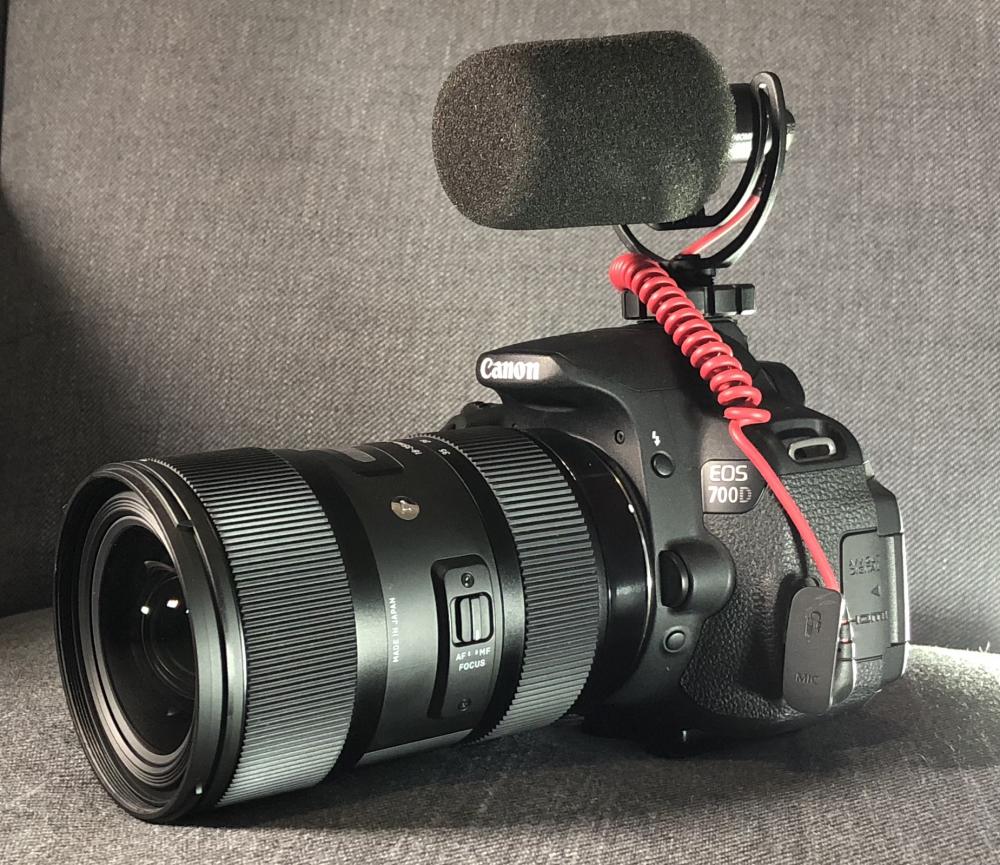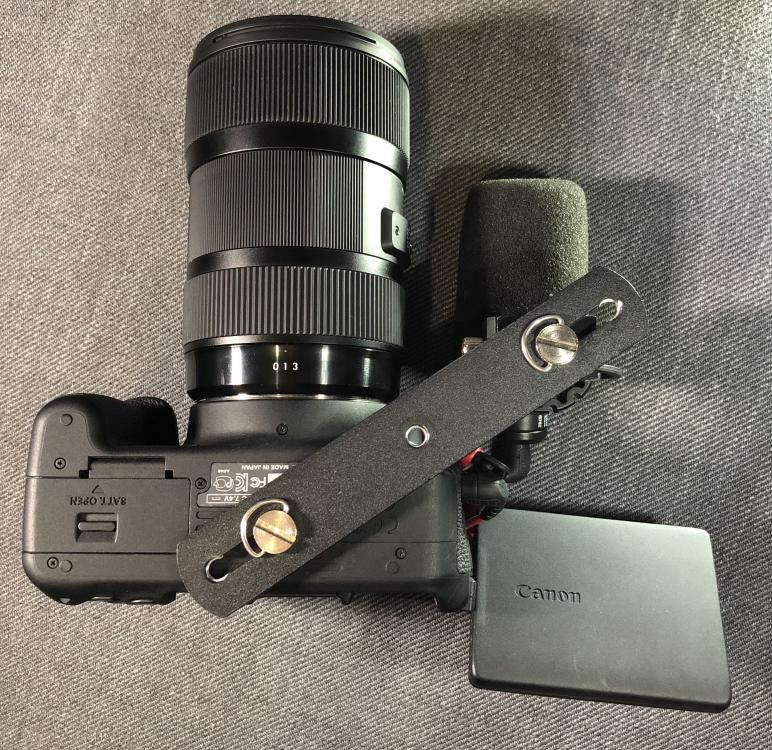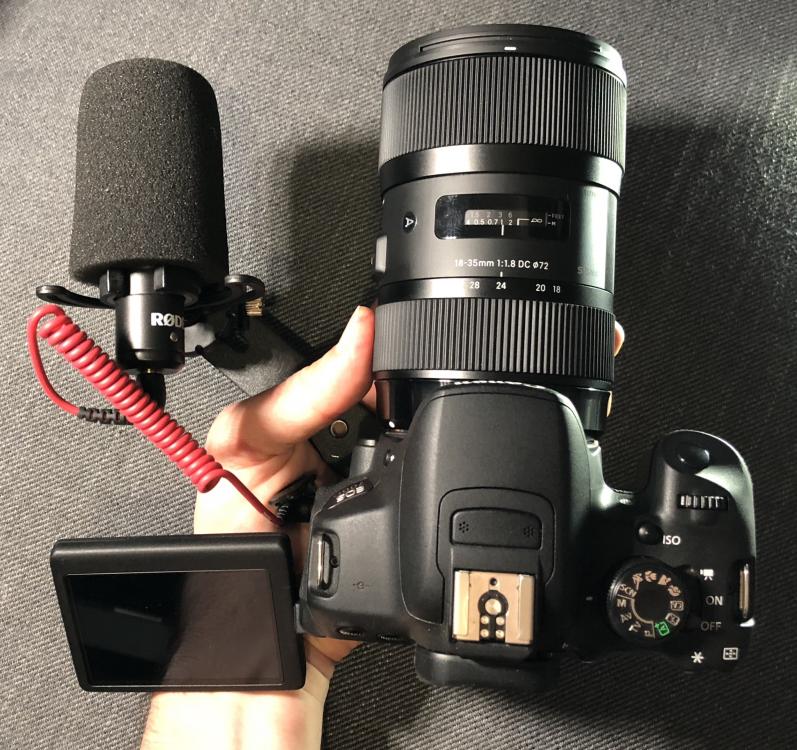-
Posts
7,991 -
Joined
-
Last visited
Content Type
Profiles
Forums
Articles
Everything posted by kye
-
There seems to be a very strange understanding of military tactics and weaponry going on here. The scenario that some people seem to be suggesting is that this happens: the people learn that their government can't be trusted for some reason and decide to replace them using force they then stage some kind of guerrilla war against the government forces they win this war because they have a very large number of very low powered weapons If this scenario is really a battle for the entire country, and neither side would hold back. So it wouldn't matter how many AR-15s or even M60s you have, when the army deploys APCs, tanks, and armour-plated surface-to-surface missiles on the ground, deploys drones, helicopter gunships, and fighter planes with air-to-ground laser-guided missiles, and the navy parks a battleship in the middle of every major port city and aircraft carriers out to sea far enough to get clear airspace, the armed population will discover that even if they had 800 trillion zillion quadrillion guns that can't shoot through armour they still wouldn't be much help. Remember that when the entire population is behind a movement then it wins against the government without needing weapons. It's only when it's not a majority of the people that weapons might play a part in something. Therefore it would be more like: some people learn that their government can't be trusted for some reason and decide to replace them using force, and they then stage some kind of guerrilla war against the government forces government forces would fall back to secure facilities and would establish supply lines between facilities and intelligence services would be monitoring communications working out who the leaders were and how things are being organised, potentially shutting down key ISPs etc using superior armour, tactics, military intelligence, and weapons, the government would gradually re-take pockets of resistance The scenario being described isn't like two armies fighting, it's like a team of navy seals in full body-armour with night-vision attacking a tribe of jungle warriors armed with spears. Of course, if it was a large enough group then the government would realise that there's votes in it and so the political landscape would change radically. People don't like to see video of soldiers shooting at their own people, although the US has gotten pretty used to government forces using unnecessary force on its own citizens, the fact nothing has happened in response to that might be a clue about how power really works. So, it would change things significantly, but the fact that the people had guns doesn't tip the balance in any significant way.
-
Cabin bag weight is a worry for me as I never want to be forced to check any equipment. I've done a lot of reading on the subject and there are a few general approaches, but the one I like is that if it becomes a problem then move away from the people weighing the bags and then put the heavy items in your pockets to get the bag under the weight limit. They don't weigh people and so this is a good strategy if they don't know you've done it. Photographers often talk about having a photographer / hunting vest that has lots of huge pockets in their bag just in case and this is what I've done. I suspect that if you're an asshole and start filling your pockets right in front of them then you may not get away with it, so that's why I suggest moving away from them.
-
I buy whatever is cheapest and just make sure it's fully backed up. Also, keep your backup drive disconnected from your computer in case you get one of those viruses that lock up your data. You should also keep your backup in a different location to keep it safe from fire or theft. In having said that though, what was cheapest tends to remain cheapest and so as I've needed more space I've bought similar drives in anticipation of creating a RAID at some point in the future.
-
Interesting video, not only for that section but also for more useful tips, like the creative team getting to know the style of the film through the DP shooting his own feet walking through a field, and using doubles for follow-shots, even before the main actors are on-set. This might be of interest to you @mercer for improvisational short films?
-
If you want to avoid recording the noise then maybe the solution is an external microphone. A previous conversation about how to use an external mic while keeping the setup very compact yielded these insights... Using a Rode Video Micro you can either mount it above the camera in the traditional way like this: Or on a flash bracket by the side of the camera: or @Don Kotlos took it one step further and used velcro to attach it to the body of the camera itself:
-
I don't know those lenses, but I'd suggest searching YouTube and Vimeo for example video footage and reviews - there are many people who are buying vintage lenses these days so there's lots of information around. Also, google will turn up lots of good information, and remember that photographers often post images from these old lenses and so these photos give a way to see how sharp the resolution of the lens is (4K video is a series of highly highly compressed 8MP images, but 24MP high quality still images are common). I've recently found sites like https://www.pentaxforums.com/userreviews/ very useful as they aggregate reviews, give ratings, and also give price history.
-
The GH5 is good but not great in low-light, therefore you want to use the fastest lenses you can get. This will also mean that your depth of field will be relatively shallow - unfortunately there is no way around this with this camera. Your 12-60 f2.8 isn't a very fast lens. I would suggest either getting fast MFT lenses like the Voigtlander F0.95 series primes, or getting a speed booster and using something like the 18-35 f1.8. These will require manually focusing. I recently filmed a lot with my GH5 at night using only the ambient available lights and I found that I really needed to use my Voitlander 17.5mm f0.95 with the aperture fully open at 0.95. The alternative is to rent another camera setup that will have better low-light performance. Perhaps something like the A7SII or A7III with a 24-70 F2.8 lens. This setup would enable you to get noise-free shots with a deeper depth of field than the GH5/fast-lens combination.
-
I think I've worked out how we stay relatively sane and civil on these forums when talking about cameras.... We let it all out in threads like this! I mean, seriously, read this thread from the beginning in one go! ???
-
I'm confused. If the people need 100 million guns then who are they going to be fighting against? If it's anyone other than the US government then they'd either need a navy or snowshoes, and if it's someone to the south then they'll be completely screwed because there will be a great, impenetrable, beautiful wall in the way ???
-
I have this kind of setup to connect my 4K Dell to my MBP via a cable. In terms of testing it beforehand, I'm not sure how you would do that, but I also think that maybe you don't need to. If you get the RAID setup and it doesn't work with the ASRock Thunderbolt 3 at 40Gb/s then just return the ASRock and get something else that does work. Even if you have to bin it and buy another Thunderbolt card, you'd still lose less than buying your second RAID choice.
-
Every time I see a screenshot I always look at how much battery people have left. It's probably because my wife and kids are always screaming about having 2% left when we've only left the house 5 minutes ago, and I just wonder why they don't charge them while they're at home... 26% - that's considerably above average from what I see online, well done! My impression is that they're kind of the "zero ergonomics modular camera" equivalent of early Blackmagic. They push what can be done for the money, but the question is if they're reliable. Most of the reviews I've seen online from previous models are from people who pre-ordered really early and are receiving the camera in the first batches. The reviews typically include a mixture of gorgeous footage from the Kinefinity, nice footage of them using the Kinefinity, and shaky iPhone footage from when the camera totally bricked itself and won't turn on again, followed by a narration about how it took an hour on the phone to tech support to reset it, or how they had to send the unit back and that's why the review took 6 weeks to film. I think they've got a lot in common with the P4K in that naive people likely ordered based on specs and end up selling it when they realise the camera isn't waterproof (or something equally obvious to most people) so there might be some bargains around second-hand. However, I'd read a lot around how buggy the firmware is before parting with your money
-
Is this to do with the mechanisms that combine the pixels together to down-res the output to 4K from the 8K sensor?
-
Did they cover fully-normalised databases yet? If someone says they've studied database design (in a programming context) and they don't know when a fully-normalised database is better than a semi-normalised database, then I just assume they're lying and/or don't know anything I think it's down to the clothing. @Kisaha also said "which for my country equals to Polar temperatures" which is true for me as well because we don't have clothing that is suitable for that kind of thing because it basically never happens! The wife and I are contemplating visiting Antarctica at some point, and apart from renting some really nice lenses I think I'd also rent some suitable clothing too
-
In a battle between the people with 100 million guns and the government, my money is on the side with the predator drones, not with the side who can't even talk about photography equipment online without getting into an argument.
-
Based on the Z Cam E2 already having done it, I'm also pretty certain it can be done.. ? That's not the limit in terms of what is state of the art either... both the RED MONSTRO 8K VV and the RED HELIUM 8K S35 do 8K60, and in theory they should be able to pump enough pixels for 4K240, so either they didn't think anyone wanted it, or there's some other limitation.
-
No worries mate... -3 would make me pretty grumpy too! All professions, huh? ALL professions? Really? Lawyers? Lobbyists? Hitmen? ..................Politicians? ???
-
What setup are you thinking of investing in?
-
8K has four times the pixels of 4K, so 8K30 is equivalent to 4K120 in terms of pixels-per-second. You might be right about less processor intensive processing but they'd have to be choosing from the options available in the marketplace which may not have a less-compression / higher bit rate option at the right price. Of course, if you were a microchip manufacturer then investing in the market for a 8K video compression chip isn't a risky proposition, and phones have been doing 4K60 with efficient power consumption and thermal loading for a few years now, so it's not like the tech is that far away.
-
Not realising that they should worship the art of photography or film-making and see the rest as tools. I suspect that brand worship is a symptom of the amateur who loves the equipment and talking about it online and not the pros who are way too busy trying to balance the quality of their work with putting food on the table, but who knows...
-
I'm still unclear if the OP is using a 100mm lens or a 100mm equivalent lens. I'm also a little surprised that you didn't get good results. I've only used a gimbal on my phone but it made smooth movement really easy to achieve. Maybe with a longer lens it would help to change to the slowest movement? What was the problem you had? Was the pan speed uneven or did it not stabilise enough?
-
I used mine hand-held with a 58mm Helios on it, which is the equivalent of a 116mm lens on full-frame. That worked well when I was able to be reasonably steady but needed a bit of help when I was cold or had been active. On a gimbal you shouldn't have any problems at all
-
No crop and it's really wonderful to use - I have used it handheld with long vintage lenses and it's worked really well. Enjoy!
-
No insult intended! Sorry if that's what it sounded like. I sympathise for the struggles that the pros are experiencing with the changes in the industry, and in a sense I just have my struggles in a different industry. I've had my fair share of stress from work (or the lack of it) during my career and there is just as much criticism and commentary of my industry from those outside it as there is in photography I think. We all live somewhere and holiday somewhere else, and we all work in one industry and have hobbies in other industries.
-
8K is twice as wide as 4K, thus has 4X the pixels. Maybe you're thinking of MP?
-
I'm an amateur, as are many people here I believe, so I think we'll grapple with the changes that are likely occurring in our own industries, and visit the world of photography and film-making in our spare time and with the luxury of not having to survive from it.








